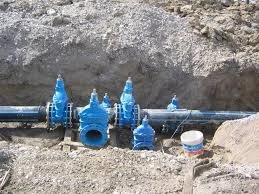Noy . 23, 2024 00:13 Back to list
2 inch pvc pipe
Understanding 2-Inch PVC Pipe Applications, Benefits, and Installation
When it comes to plumbing and construction, PVC (Polyvinyl Chloride) pipes have become a popular choice due to their durability, lightweight nature, and versatility. Among various sizes available, the 2-inch PVC pipe stands out as a commonly used option in a variety of applications. This article delves into the details of 2-inch PVC pipes, exploring their characteristics, benefits, applications, and installation processes.
Characteristics of 2-Inch PVC Pipe
PVC pipes are known for their smooth interior surfaces, which allow for optimal water flow with minimal resistance. The 2-inch PVC pipe has a diameter of approximately 5.08 cm and is commonly used in both residential and commercial applications. PVC pipes are available in different schedules, with Schedule 40 and Schedule 80 being the most popular. Schedule 40 is typically used for general applications, while Schedule 80 offers higher pressure ratings and is used in more demanding situations.
One of the prominent features of PVC pipes is their resistance to corrosion and chemical damage, which makes them ideal for water transportation. Moreover, PVC pipes are not affected by rust or biological growth, giving them a substantial lifespan. The flexibility in installation, coupled with their lightweight nature, makes transporting and handling much easier compared to metal pipes.
Benefits of Using 2-Inch PVC Pipe
1. Cost-Effective PVC pipes are generally less expensive than their metal counterparts. The lower cost of materials, as well as the reduced labor involved in installation due to their light weight, contributes to overall savings.
2. Durability With a lifespan that can exceed 50 years, 2-inch PVC pipes are built to withstand various environmental factors. They can handle pressure without cracking or breaking, making them suitable for long-term use.
3. Low Maintenance Unlike metal pipes that may corrode over time, PVC pipes require minimal maintenance. Their smooth interiors reduce buildup and clogging, leading to fewer maintenance interventions.
4. Easy Installation PVC pipes can be cut and assembled with standard tools, making them user-friendly for both professionals and DIY enthusiasts. The use of solvent cement for joining the pipes allows for quick and secure connections.
5. Versatile Applications 2-inch PVC pipes can be utilized in a multitude of settings, ranging from irrigation systems to drainage applications. They are commonly used for waste and vent systems, as well as in swimming pools and spas.
Applications of 2-Inch PVC Pipe
2 inch pvc pipe

1. Residential Plumbing The 2-inch PVC pipe is frequently used in residential plumbing systems for waste disposal and venting. Its durability ensures that it can handle the corrosive nature of sewage without degrading over time.
2. Irrigation In agriculture, 2-inch PVC pipes are ideal for irrigation systems. They efficiently distribute water resources to crops and gardens, promoting healthy growth while minimizing leaks and wastage.
3. Drainage Systems Proper drainage is essential in preventing water accumulation and structural damage. 2-inch PVC pipes are commonly used in stormwater drainage systems, allowing for effective runoff management.
4. Aquaculture and Aquaponics The aquaculture industry benefits from the use of PVC pipes for creating systems that house fish and plants in controlled environments. Their resistance to algae growth and chemicals makes them suitable for this application.
5. HVAC Systems In heating, ventilation, and air conditioning (HVAC) systems, 2-inch PVC pipes can be employed for venting exhaust gases safely out of the building.
Installation Tips for 2-Inch PVC Pipe
1. Preparation Before installation, ensure that the workspace is clean, and all necessary tools and materials are on hand. Measure and cut the pipes accurately to fit the desired layout.
2. Joining Use solvent cement designed for PVC to ensure a strong and waterproof bond. Apply the cement evenly and press the pipes together, allowing time for the adhesive to cure.
3. Support Install supports at regular intervals to avoid sagging or bending, especially in long stretches of horizontal pipe.
4. Inspection After installation, inspect the pipes for leaks by running water through the system. Address any issues before sealing walls or covering pipes.
Conclusion
The 2-inch PVC pipe is an essential component in modern construction and plumbing, offering numerous benefits and applications. Its cost-effectiveness, durability, and ease of installation make it an ideal choice for both professionals and DIY enthusiasts alike. Whether used in residential plumbing, agricultural irrigation, or sophisticated HVAC systems, the 2-inch PVC pipe proves its worth time and again, making it a staple in the piping industry.
-
Durable PP Rigid Sheet: Lightweight, Chemical Resistant Solutions
NewsAug.21,2025
-
PVC Grey Sheet for Extraction: Chemical Resistant & Durable
NewsAug.19,2025
-
Durable PVC Pipe Fittings for Plumbing & Irrigation Needs
NewsAug.18,2025
-
HDPE Steel Belt Reinforced Spiral Corrugated Pipe | High Strength
NewsAug.17,2025
-
HDPE Pipe Fittings: Durable, Leak-Proof Solutions
NewsAug.16,2025
-
Premium CPVC Sheet: High-Temp & Chemical Resistant Solutions
NewsAug.15,2025

